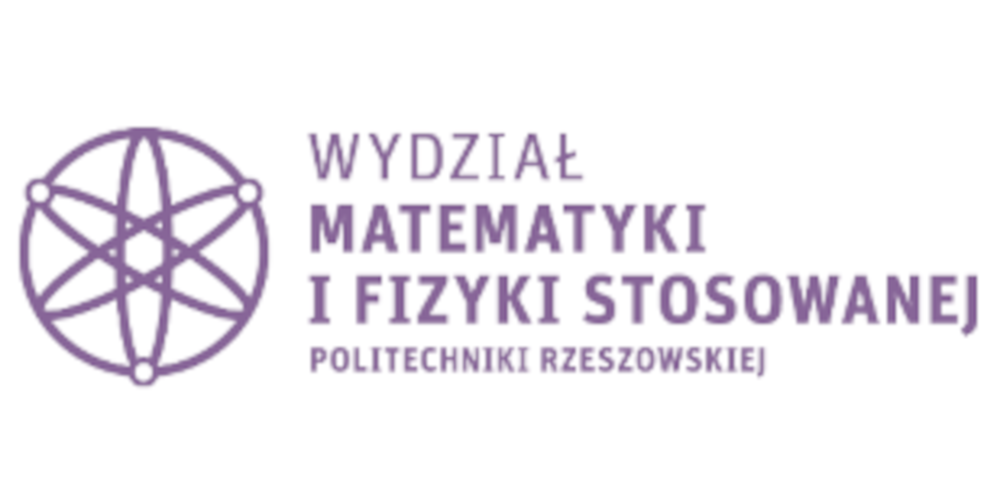

Monographic Lecture III - Sequence and function linear spaces
Some basic information about the module
The aim of studying and bibliography
The main aim of study:
To acquaint students with the basic sequence and function linear spaces occurring in functional analysis.
The general information about the module:
The module is implemented in the fifth semester. It consists of 30 hours of lectures and 15 hours of classes. It ends with an exam.
others:
Literatura wykorzystywana podczas zajęć zostanie podana poźniej.
Bibliography required to complete the module
| 1 | Banaszak G., Gajda W. | Elementy algebry liniowej | Wydawnictwa Naukowe-Techniczne, Warszawa. | 2002 |
| 2 | Gleichgewicht B. | Algebra | Oficyna Wydawnicza GiS, Wrocław. | 2004 |
| 3 | Lusternik L. A., Sobolew W. I. | Elementy analizy funkcjonalnej | Państwowe Wydawnictwo Naukowe, Warszawa. | 1959 |
| 4 | Musielak J. | Wstęp do analizy funkcjonalnej | Państwowe Wydawnictwo Naukowe, Warszawa. | 1989 |
| 1 | Chmieliński J. | Analiza funkcjonalna. Notatki do wykładu | Wydawnictwo Naukowe Akademii Pedagogicznej w Krakowie. | 2004 |
| 2 | Prus S., Stachura A. | Analiza funkcjonalna w zadaniach | Wydawnictwo Naukowe PWN, Warszawa. | 2007 |
| 3 | Rutkowski J. | Algebra abstrakcyjna w zadaniach | Wydawnictwo Naukowe PWN, Warszawa. | 2009 |
| 1 | Musielak J. | Wstęp do analizy funkcjonalnej | Państwowe Wydawnictwo Naukowe, Warszawa. | 1989 |
Basic requirements in category knowledge/skills/social competences
Formal requirements:
The student satisfies the formal requirements set out in the study regulations
Basic requirements in category knowledge:
The student is familiar with linear spaces and basic algebraic structures. The student knows the notions of a sequence, bounded sequence, convergent sequence, a function and bounded function.
Basic requirements in category skills:
Students can check the linear independence of vectors and identify the bases of elementary linear spaces.
Basic requirements in category social competences:
Student is prepared to undertake objective and justified actions in order to solve the posed exercise.
Module outcomes
| MEK | The student who completed the module | Types of classes / teaching methods leading to achieving a given outcome of teaching | Methods of verifying every mentioned outcome of teaching | Relationships with KEK | Relationships with PRK |
|---|---|---|---|---|---|
| MEK01 | checks the properties of operations | lectures, exercises | written test |
K-W02+ K-W04+ K-W06+ K-U01+ |
P6S-UK P6S-WG P6S-WK |
| MEK02 | checks whether or not a given structure is a ring and a field, checks if two given fields are isomorphic | lectures, exercises | written test |
K-W05+ K-W06+ K-U01+ |
P6S-UK P6S-WG |
| MEK03 | checks the conditions required for the linear space, can verify if the subset of a linear space is a subspace | lectures, exercises | exam |
K-W02+ K-W04++ K-W05++ K-U01+ |
P6S-UK P6S-WG P6S-WK |
| MEK04 | has a basic knowledge concerning linear spaces, both sequence and function, that are used in functional analysis | lectures, exercises | exam |
K-W01+ K-W03+ K-W04+ K-W05+ K-K01+ |
P6S-KK P6S-WG P6S-WK |
The syllabus of the module
| Sem. | TK | The content | realized in | MEK |
|---|---|---|---|---|
| 5 | TK01 | W1-W4, C1-C2 | MEK01 | |
| 5 | TK02 | W5-W6, C3 | MEK01 MEK02 | |
| 5 | TK03 | W7-W10, C4-C6 | MEK01 MEK02 | |
| 5 | TK04 | W11-W12, C7 | MEK01 MEK03 | |
| 5 | TK05 | W13-W14, C8 | MEK03 | |
| 5 | TK06 | W15-W16, C9 | MEK03 MEK04 | |
| 5 | TK07 | W17-W20, C10 | MEK03 MEK04 | |
| 5 | TK08 | W21-W22 | MEK03 | |
| 5 | TK09 | W23-W24, C11-C12 | MEK03 MEK04 | |
| 5 | TK10 | W25-W26, C13-C14 | MEK03 MEK04 | |
| 5 | TK11 | W27-W30, C15 | MEK03 MEK04 |
The student's effort
| The type of classes | The work before classes | The participation in classes | The work after classes |
|---|---|---|---|
| Lecture (sem. 5) | contact hours:
30.00 hours/sem. |
complementing/reading through notes:
10.00 hours/sem. |
|
| Class (sem. 5) | The preparation for a Class:
15.00 hours/sem. The preparation for a test: 10.00 hours/sem. |
contact hours:
15.00 hours/sem. |
Finishing/Studying tasks:
10.00 hours/sem. |
| Advice (sem. 5) | |||
| Exam (sem. 5) | The preparation for an Exam:
15.00 hours/sem. |
The way of giving the component module grades and the final grade
| The type of classes | The way of giving the final grade |
|---|---|
| Lecture | Credit for the lecture is based on attendance. |
| Class | A credit for the classes is based on the result of test. |
| The final grade |
Sample problems
Required during the exam/when receiving the credit
(-)
Realized during classes/laboratories/projects
(-)
Others
(-)
Can a student use any teaching aids during the exam/when receiving the credit : no